

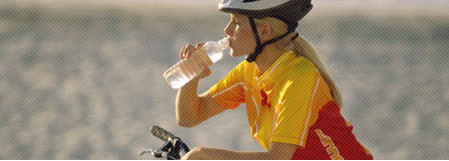 |
Bootcamp: Personal Training and Nutrition Counseling |
![]() New
and interesting information on metabolic rate
New
and interesting information on metabolic rate
What's New?
Dementia risk is increased by high blood sugar levels.
Two studies reported finding a positive correlation between dementia and high blood sugar levels. Here is an article from the Harvard Health Publications on that subject.
1. Vitamin Supplements
If you take vitamin supplements in hopes of warding off cancer and other illnesses, you may not be doing yourself any favors. In fact, a new study suggests you might even be increasing your cancer risk. Here is a great article by consumeraffairs.com that gives you the details. Based on a 29 Feb 2008 news release. You may be surprised. Since the middle of 2007 I have pretty much stopped taken any vitamins and I feel absolutely fine with it, and, old as I am, I am still working out about 5-6 days a week.
Are Supplements Killing Us? An article from 2017 from the Fox News Health webpage.
"However, if you stop taking a multivitamin, the authors suggest you consider taking a vitamin D supplement. The typical diet for most men and women doesn't supply enough of this crucial vitamin, and while sun exposure boosts vitamin D production, it has health risks of its own." This from another article that discusses the safety of taking multi-vitamins. This parallels recommendations by both, Dr Rosenfeld and Dr Edell.
Moreover, you may want to consider taking a fish oil supplemen. We already know that myalin sheaths of nerves are mainly fat and that fat is not the problem (in moderation) in our diets, but that we require it. The brain, the central nervus system, is largely fat. The article linked here will point at more detail, and also, referencing the study, show some negative correlation between use of fish oil and dementia. The Consumer Lab was linked in the article to determine which are reliable brands of fish oil.
Vitamin D3. Since we simply aren't out and about, preferably naked, but hopefully not, in the Sun, and forget winter months, we do not get the amounts of Vitamin D3 that we should. A shortfall can be problematic. Recommendations are around 800-2000 IU per day. The Mayo Clinic has some very specific recommendations, mostly disease related, however, at the recommendations link.
2. Telomeres
What are telomeres? They are the little 'end-caps' of DNA strings. The little yellowish spots in the microscopic image. The 2nd image shows an artist's conception that makes it a little clearer. Picture telomeres as the little plastic or rubber wrapper at the ends of a shoelace. What happens if that breaks or comes off? The shoelace will begin to fray and fall apart. Simplistically put, the telomeres (a more in-depth explanation here, and an easier, but maybe even more interesting one here) are important to cell replication. Telomeres, as you can read at the links, are important to a lot of cell processes, including limiting the number of replications, i.e. from allowing a cancerous run-away condition. Telomerase involves the use of telomeres in the treatment of age-related diseases and conditions.


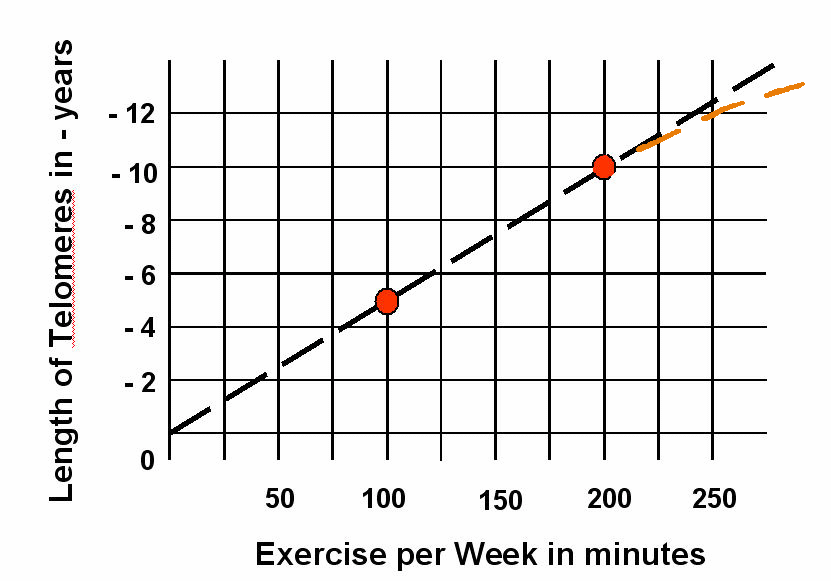
It had long been known that telomeres get shorter as we age, allowing not exact replication to take place, and us to show signs of age. A five-year study of 2400 pairs of identical twins in England, revealed an important exercise and telomeres-lenght relationship. Identical twins allowed the researchers to factor-out genetic traits.
Here is what they discovered: A person exercising moderately 100 minutes a week, has telomeres approximately 5 years younger than their chronological age. A person excerising moderately 200 minutes a week, has telomeres approximately 10 years younger than their chronological age. What we don't know from this is how linear that relationship remains. I am sure we'll learn much more as the data is continued to be analyzed. Just to illustrate it, I plotted what they gave us in the third picture. I speculate that there will be a curve that shows that at some point there will be a region of diminishing returns. The orange dashes explain what I mean. Nature does not do well with straight lines. Let's wait then, impatiently, what else those good scientists will come up with. This was a stunning revelation already in that, for the first time, actual data explains why people who exercise seem to be younger in appearance and action.
3. The Importance of Lifestyle vs Genetics
A subsequent spin-off from the twins data, precisely because of the researchers' ability to factor-out genetic traits is this: Lifestyle, which in the fitness world is treasured so highly, has been found to be just a minor factor in the way a person physically turns out. Genetics are a way bigger part than we had heretofore thought. The bottom line here is that you have a given potential and only need to maintain that. Ok, that's lifestyle, but if you are, and always have been, a certain body type, chances are, lifestyle changes will do very little to change that. You can be quite chunky (based on frame, I don't mean grossly overweight), yet very healthy, or be rail- thin, and just as healthy.
To put this into proper perspective, one needs to make a couple of assumptions. First of all, that a baseline lifestyle would consist of eating right, and exercising moderately, or working physically. Any deviation from that, warrants some adjustment, and might already have given you some indications of concern. Secondly, that the lifestyle is one of choice, and not due to some illness or unusual circimstances. Meaning that you must have the freedom to modify your lifestyle to some extent.
To illustrate this: Were we to take a 1000 guys (guys, since I am using Arnold as an example) and have them all start from the point where Arnold embarked on his journey to be Mr. Olympia, do the same exercises, take the same drugs, suffer the same workout rages etc., we'd most likely still end up with just one Arnold and a whole lot of other people who are way off from their genetic centroid, but not in Arnold's class. And please, do not make the mistake of equating such an accomplishment with a state of good health, either mentally or physically. Some people are what is called "physically gifted", and even at that, it will take all of your time and in some cases massive amounts of drugs to drive you to such expremes. Physically gifted means that you have a genetic edge, like a world-class long distance runner who has such perfect feet and foot mechanics, that he runs in shoes the average person could not run a mile in, without being injured. I'm sure you get the point. Being physically gifted, is like having a talent for art, math, or music, for example, and not a matter of lifestyle. Once that genetic edge has been discovered, it will need to be developed to have any real significance. All of you who watch Amercian Idol, know this to be so.
So you say, and rightfully so, "Then what the heck am I doing all of this stuff for?"
The answer is, to be centered around your personal genetic potential.
" Meaning?"...Meaning that, if you are a moderately active person, who climbs stairs, walks a lot, and is working physically at your job, eat moderately and healthy, avoid fatty or greasy foods to any excess or completely, etc. more on that below, you are probably at what is called a plateau. That's not a bad place to be. You see, after a couple of decades of exercising in and out of the gym, I am essentially the same. Yes, I could change that at great cost to lifestyle and comfort, and might achieve, for a while, the shape or condition of a person with a different genetic makeup. Humans don't like extremes, not mentally, physically, or politically, and neither do our bodies. Extremes are extremely costly to maintain and therefore usually don't last forever, and are rarely maintained without a high physical or even mental price to be paid, over the long haul.
For the bodybuilder, pushing the body far away from the genetic centroid (comfort zone), requires increasing drug stacks and two or three gym sessions with extreme lifting efforts each day. Olympians, too, try to exploit a genetic edge or physical talent that they have. They and other physically gifted athletes will also push toward some extreme, to develop what they have as much as that is possible, without artificial means. They devote their usually short careers to that. Their extreme physical conditioning will fade as well, since it is virtually impossible to maintain for long periods of time, especially, against the normal aging process. People who push themselves to compete in physical fitness contests of all kinds know that. They hone themselves by dropping body fat, lifting or training more intensely, etc. etc. to be ready for the contest, and then, once it's over, return pretty much back to pre-show condition.
"Alright already, enough of this philosophizing, what are you telling us then?"
Be happy! Unless you are grossly over- or underweight, are moderately active and eat a reasonably healthy and varied diet, you are probably at or close to your genetic centroid, i.e. the shape you are born (genetically predisposed) with. Going away from that in either direction will have some consequences in happiness, lost time to enjoy life, or even health.
MODERATION IN ALL THINGS RULES! Extreme behavior is never a good thing, it lacks natural balance.
"Then why am I bothering to do cardio, lift weights, improve balance, core strength, and so forth?"
Fact is, that you may have already benefited from that. While the exercises won't take us far from our genetic centroid, they tone us, make us stronger, more flexible, more resistant to damage in case of accidents, improve body composition, give us faster recovery from illness, and lastly, don't forget item No. 1, the telomeres. They tend to make us appear and perform at a level younger than our chronological age. And I, for one, see nothing wrong with that.
"But, I never used to be this heavy, and just added a bunch of weight in the past several years, that's not my genetic centroid, as you call it. What's up with that?"
Let me see if I can put it in a way that makes sense. It is a more natural thng for the body to store and to conserve fat, anticipating hard times, than to let go of it. Because, hard times were always just around the corner (even ice ages). Once the cold season or severe lack of food came along, stored energy (fat) would be efficiently maintained and slowly used up. Unfortunately, we have no mechanism built-in, that makes us reduce food intake when we don't anticipate lean times. The body doesn't suddenly go into a high calorie burning phase, to make us nice and lean. That's done by our conscious effort only. So here we are, not only putting on fat, but also becoming more efficient at hanging on to it. Suddenly, we find ourselves at a new plateau, well above our regular weight. In this century, for us here in the Western countries, the time of having to consume stored fats never comes, and the body needs to handle and contain the excess. In this case, we will have to change our dietary habits, while continuing to stay physically active, to slowly nudge the body back to its previous, comfortable, and probably healthier level. Forcing this for a quick result with drugs or by other dramatic means usually has the body spring back to its new-found plateau. Like a hard push against a swing. It propels the body temporarily to a different place, but then it comes back to rest where it has been. If we want to be wherewe are not, we will have to move the whole swing, that is, change the rules and fundamentals. Exercise by itself can't do it. It helps, it builds muscle, it pushes us into periods of higher calorie burn rate and makes us stronger all around, and it teaches us disciplined behavior, but it simply can't take off all of those extra pounds we might be struggling with. That work is done at the dining table and even more so, with our shopping habits. I contend, that if it's not in the house, I won't go out of my way to get the 'bad' stuff to snack on (and don't have it delivered either).
4. Cardio Exercise
A recent study finds that cardio exercise can be more effective if split into two or more segments, divided by at least 20 minutes of different activities (such as lifting weights, for example). This reminds me of the already known benefits of interval exercises, in a way. Here is the advantage of exercising in two or more 10-minute segments divided by at least 20 minutes: Fat metabolizing is significantly enhanced during the second and third set of exercise. This is great, because breaking cardio into two or more parts (divide the workout and conquer the fat) makes the exercise easier AND more effective. IMO a true WIN-WIN recommendation. My theory on this is that, if we push a body during a long duration effort, it will take whatever it can metabolize and burn for energy - usually, that quick energy source is muscle. With this new modification, we won't let the body get into that condition. Before it gets to the muscle-burning phase, we slow it down and do something else that allows the body to rest or slow down, rather than to frantically try to find energy stores for marathon-type performance. Then, after keeping it in the slower fat-burning mode for 20 minutes, we jump back on the cardio machine for another 10 minutes. Repeat as necessary. Get the point? Do less, feel less exhausted, yet burn more fat by keeping the body in the fat-metobolization state.
Disregard the Google weight-loss ads. The article source is linked in there as well - The link to the Study
My take is that if you enjoy cardio exercise, then do it. To stay totally injury-free, try a low- to non-impact cardio exercise (e.g. the recumbent or upright cycle, Nautical machine, stairs, or maybe the elliptical machine) to improve your cardio-vascular condition. The amount of exercise you do and the intensity, make all the difference in the number of calories burned. The rest is mostly eating sensibly and the right type of foods.
4. Walking
When I travel and take off for 2-3 and even as long as 6 months, I walk for hours every day, just to take in the sights and scenery. When I come home I can jump right back into group exercise classes and am never winded. Long-time Bodybuilders were found to have hardening of the arteries after years of heavy lifting. Each time we lift a heavy weight, the blood pressure momentarily spikes up. Hardening of the arteries is just the body's response to those pressure spikes. Adding a cardio exercise to their workout program completely reversed that condition. Most of them were told to just walk.
Walking for exercise is a much underrated activity. Before humans settled in specific locations, i.e.built cities, before agriculture, for 100s of thousands of years, they conquered the Earth by walking. Nomadic families didn't run, but walked endlessly. We are made to walk.
6. Natural Anti-depressant
Exercise makes you happy. It is a known depression fighter. Natural endorphins are activated and raise the overall sense of well-being.
The Bottom Line?
So, clearly exercise is important, but, so is being happy.
I know I am not alone in this, and the issue is raised in different ways so many times, exercise creates free radicals! They are not good, but they are also a natural byproduct of extended and intense exercise. The are directly counter productive to staying young (of course, let's face it, no one ever does) and cause damage to the body. We have seen people who over-exercise (exercise addicts definitely among them) and people who do amazingly strenuous exercises, and more often that not, their bodies show the result - think marathon runners. Theirs is not a great recipe for staying young or even healthy. They may have excellent cardio-vascular conditioning, but the rest of their body is going to hell in a hand-basket. I am reminded of my first doctor in this area. The man was barely able to move, but ran his last marathon age 78. He freely admitted that all of that running caused the damage to his body.
Maybe the answer is that there is no exact answer, or there would not be so much debate over this. I, as usual, like to point at human evolution. They were not runners, but walkers, no question about that. No more would they outrun a threat, lacking speed, than they could outfight one, lacking claws, fangs, and strength. But they most likely learned to out-think them. Humans are a physical compromise, lacking specific adaptation traits to a particular environmental niche, as do all of the rest of the creatures on Earth who evolve into a particular niche and live and die there. We can climb, when we have to, we can run, when we have to, but we make things and travel and adapt, regardless of climatic conditions or environmental niches. If we don't fit a particular niche, we change the niche to suit us. You know what I am getting at. We tend to create our own environment around us. Our history is probably the reason why a goal of overall, that is, total body fitness, is the best approach. Humans, in their nomadic phase, that lasted millions of years, moved like packs of wild dogs. Walked great distances and stopped whenever hungry to forage or hunt, or when tired, and lingered when full and happy. Exercise would have to reflect something like that, IMO. Something that we can easily and willingly incorporate into our lifestyle. I think Covert Bailey's famous answer is probably closer to the mark than even he could have imagined: He replied when asked what the best exercise is, by answering: The best exercise is the one that you like to do. Great answer. If you don't like the exercise, you won't do it.
Of course we can go beyond that generalization, but at a cost. By forcing the body of young children to train a certain way, provided that body and mind are genetically predisposed that way, we can create athletes that excel, but that's not the norm, since humanity, like all things in nature, are distributed under the Bell-curve. Even so, some, if not most, of these elite athletes are going to pay a price for their specialization.
So the bottom line, at least as I see it, is good nutrition (that is, within given possibilities, as little processed foods as possible) and moderate exercise. The gains from going beyond moderate levels of activity (which in itself will represent a range, depending on each individual) will be diminishing as we push past some optimal amount. For example, adding 20% more effort and time to exercise may gain us a percent of whatever we're after, and in the worst case, causes more damage than good. For a trainer, the ideal would be to find that optimal amount for each client, or of course, for those who work out on their own, they need to find that happy medium on their own.
___________________________________________
Here is an authoritative source on proper eating and a great resource for finding out about the value of your supplements: These are the Mayo Clinic's suggestions for heart-smart eating, while this link takes you to their evaluation of the popular Coenzime Q10 supplement.
__________________________________________
About lifting: Lifting is important, especially as we get older. We tend to lose muscle mass as we age. In my opionon, for what it's worth, you get the most out of the exercises that engage the most muscles at a time. Combination exercises as opposed to isolation exercises. What's more, these combination exercises often involve the core as well. It's all good, because the more muscles you engage at one time, the better it is.
The best illustrated books I have found on the subject, that show all of the muscles involved in each exercise, and show the exercises and how they are effective and correctly executed, are by Frederic Delavier. I found them both at amazon.com (and recently at Costco's as well) pretty inexpensive ($13 each). Be aware that the women's edition targets mainly legs. I found the Men's edition (actually, it shows women in there as well) and the new Strength Training Anatomy Workout to be much more universally useful.
 |
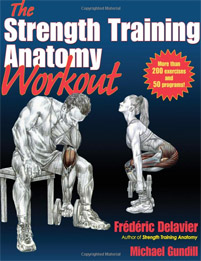 |
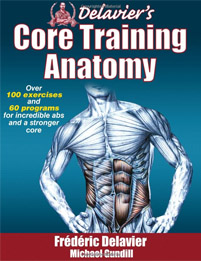 |
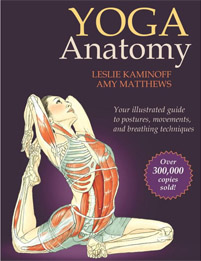 |
About the Author:
The former editor in chief of the French magazine PowerMag, Frédéric Delavier is currently a journalist for the French magazine Le Monde du Muscle and a contributor to several other muscle publications, including Men’s Health Germany. He is the author of the bestselling Strength Training Anatomy and Women’s Strength Training Anatomy, which have sold a combined 350,000 copies in the United States and have been translated into 15 languages.
Delavier is a gifted artist with an exceptional knowledge of human anatomy. He studied morphology and anatomy for five years at the prestigious Ecole des Beaux-Arts in Paris and studied dissection for three years at the Paris Faculté de Médicine.
Delavier won the French powerlifting title in 1988 and makes annual presentations on the sports applications of biomechanics at conferences in Switzerland. His teaching efforts have earned him the Grand Prix de Techniques et de Pédagogie Sportive.
Delavier lives in Paris, France.
The Yoga Anatomy book is from a different author and can be ordered from amazon.com or occasionally purchased at Costco.
Or you can go here to see if you can get them (or any other book, for that matter) cheaper:
__________________________________________
Fitness as a Lifestyle:
1. Know What You Want!
Set a REALISTIC and achievable goal! See the twins study above. Know that you are only going to centroid yourself around your genetic potential with a relatively moderate effort.
2. Know yourself.
Analyze your habits, good or bad. Know your body and your genetic makeup. If you are, for example, a large-framed woman, don't look over at that petite, slender girly-girl and pick her as your goal. That will never be you. Same goes for the guys. If you are a small-boned man, don't think about being Arnold Schwarzenegger. That's out of the question. That goes with picking a ralistic goal, based on your body's genetic parameters and your psyche (i.e. personality traits). Behavioral adjustments need to be made as well. Let's say you are a smoker. Don't you think that you would have to break that habit first, before embarking on a fitness program? That's just being reasonable and realistic.
3. Nothing is free!
If at all possible, try to look past the hype and marketing of a multi-billion Dollar industry. Some of it may be fun, such as gym clothing, but beyond that, more TV advertised gym equipment ends up stored, forgotten, or sold within weeks, sometimes days after being purchased. The marketeers care about your money, not your condition - only you do that. If you are old enough to remember, you will notice that the same stuff is being marketed again and again, over the years, because the public has a very short memory and is eager to buy the easy way out. Beyond that, bright-eyed enthusiastic sales people will show you testimonials about the miraculous benefits of their respective supplements. It is a commercial battlefield for your attention, praying on your fears and hopes, hoping for your gullibility, and demanding your Dollars, all in the name of health, fitness, the ever elusive fountain of youth, amazing sex, and a long life free of illness. And as ever: Caveat Emptor - Buyer Beware.
You’ve all read the hype. The “secrets” to losing weight, getting the killer six-pack abs or those 'buns of steel' are selling copy. Most of the devices, plans, and goodies are not about you and your body, they are about making money. They are exploiting everyone's desire to find the magic bullet. To get instant gratification and results in exchange for money. It's a societal weakness, perpetuated by those businesses that place supposedly quick and easy "solutions" before us. The other tactic is to try to scare us into using products that are rarely a good substitute for a whole and natural food diet and reasonable levels of exercise, and always, always cost more.
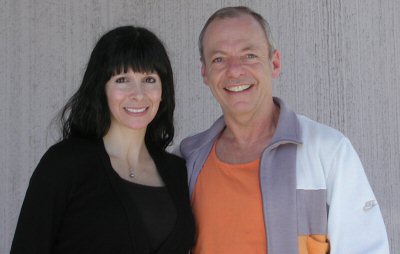 |
|
I
should be so lucky. My dear friend Lisa, a lovely and talented master
instructor and Reebok representative. |
STEP 1
Prepare and Plan
Know what you're after. A little toning, some fun, some diversion, a break from a sedentary lifestyle, or to lose some weight that makes you feel physically uncomfortable, i.e. living up to your genetic potential. It does not have to be a gym activity either.
However, in every gym there will be personal trainers willing and able to give you all the assistance, advice, and support you need. It's what they do. They will establish a baseline for you, evaluate your present state of fitness and then take it from there. A good trainer will have you on a custom training program that is designed for your personal needs. Don't be afraid to be critical - it's your body. If anything hurts (I don't mean muscle soreness) or is beyond your current capabilities, don't do it! Two of the silliest sayings that came from the old gym and fitness culture were: 1) If it doesn't kill you, it'll make you stronger, and even worse 2) Work through the pain! I hope that we have finally grown beyond those stupidities.
Consult a physician before starting an exercise program.
Here is an interesting bit of information: At the beginning of each new year, the gyms are packed with well-intended "wannabes", who are trying to meet their newyears resolutions. By March, nearly all of them will be gone. By the middle of the year, just 3 - 4 percent of all of the newbies will remain and become long-term "gym rats". The gym business counts on that. That is their equivalent of life insurance companies' actuarian statistics. They know the loss rates and how much they will have to provide to the "survivors". It's their business model. Cold but true.
STEP 2
Enjoy the gym population
Feed off the motivation of others, and in time you will notice that they need you too. Have fun with them, try different things. If you find something you really like, you most likely will continue to do it.
Cross train. Go for bike rides, run, walk, do whatever makes you happy. Join in on the aerobics programs, balance that with resistance (weight lifting) training. Alternatives to aerobics are cardio machines and spinning classes. Resistance training may be using weight machines, free weights, or conditioning/body shaping classes. Record, or know your progress (if you have a trainer, he/she will do that for you), which, by the way is not necessarily measured in form of weight loss. Muscle is heavier than fat, and because of this, you may discover that you are gaining weight, yet becoming leaner.
Pursue an enjoyable cardio/aerobics and weight lifitng exercise regimen 3-5 times each week. When asked: "Which exercise is the best one to do?", the renowned fitness guru Covert Bailey answered, "The one that you like to do". Chances are, if you hate it, you won't do it very long. Experiment until you find the combination that you enjoy.
Spot Reduction!
Forget it. It's a myth. If you have a belly or flabby arms, just work the afflicted area until it is lean. WRONG!! There is no such thing as spot reduction. Fat gets deposited according to your genetic code and will come off the same way. What you can do, is to work the area and make it firmer and stronger, but the fat will come off the arms, for example, even if you work only your legs (let's say, cycling) every day. It's one of those persistent myths that seem to have a life of its own. You have no control over the specific locations. Forget about fat reducing creams, or losing fat through saunas. One is a scam, and one will only dehydrate you, and both, like all of the other 'great' ideas out there, will cost money and are a waste of time. Of course, that is not saying you should not enjoy sitting around in a steam room or a sauna. Whatever you enjoy. Just know, that those things won't change you physically.
Rest!
Did I mention rest? Sufficient rest is almost as important as exercising. When we exercise we do not build muscle mass, we tear muscles down. That is called the catabolic phase. When we sleep, we enter the anabolic phase where we rebuild, repair and strengthen those worked muscles (the body's reaction to physical stresses. Also, give those muscles a rest. Give the muscles a break. Exercise the same muscle groups not for another 48 hours. Many people work out successfully by concentrating on each major muscle group just once a week.
STEP 3
Nutrition
Unbeknownst to most of us, much has changed in the last few years, and while institutions and many medical and fitness professionals are still holding on to their outdated concepts, others are out there promoting these changes. A globally known heart surgeon, Dr. Dweight Lundell, is offering his advice: Click on his image to get to the article. It is not the first of its kind out there, but he may be saying it better than most. So, for us it means: Adapt and Improvise and learn. We are not living in a static world and things change all of the time, so get with it. Change takes us out of the comfort zone, and most of the time we resent that. When I travel as I do, at times I get comfortable in one place and really hate to leave, but push on and then find out how cool the next place may be. You get used to that.
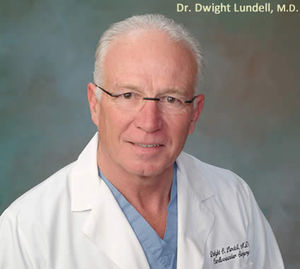 |
Dr. Dwight Lundell |
 |
|
A valuable resource for the proposed diet changes. |
4. Protein
It has been recently noted that women are notorious in getting less protein than they require.
Calorie Counting
| - Protein contains 4 calories per gram |
| - Carbohydrates contain 4 calories per gram |
| - Fat contains 9 calories per gram |
There is nothing wrong with counting calories. But, just as jumping on the weight scale every day, which is not considered a good gauge of "fatness" or leanness, there are other ways. Calories do give us a numerical idea of the energy potential that we are ingesting. The question is, how much is too much? Also, how little is too little. Sure, we can starve ourselves into an anorexic skeletal shadow of our present selves. Doable, but not desirable or healthy.
1. We want to be aware of the approximate numbers of calories we are eating.
2. We want to be aware of the calory densities in the foods that we are eating: Let me explain. A pound of spinach (yech!) is maybe only about 60 calories, but a pound of cheese will probably be (I'm guessing) 2-3000 calories (i.e. a pound of fat). Any question on calory density? It is obvious that fresh (or frozen) fruits and vegetables are very low in calories per weight. The reason is that they contain a large amounts of water. The calories in a pound of water? Zero.
3. We don't have to sit there with a calculator, but follow some sound and logical rules of eating. When snacking, snack on fruits and veggies. When thirsty, drink water. Those prudent habits must be developed to allow you to make progress. Then, if the other rules, such as minimizing sugars and not recommended fats (e.g. transfats, from parially hydrogenated oils, or polyunsaturated fats) are followed, you find yourself well on the way to a healthier and leaner self, living up to your genetic potential. Couple that with moderate exercise and a good dose of happiness and socializing, and you've got the secret formula. Just know this, if you don't ingest (eat) fat, you won't metabolize (burn) fat either. Bodybuilders of old had figured that out in the '50s and all had their treasured bottle of aluminum foil-wrapped flaxseed oil for that purpose.
4. For those who would like to count and know a little more, there is this to conside: Just breathing and maintaining a body temperature, usually well above that of the surrounding air, having a heart that pumps blood, and all the other bodily functions that keep us alive, will burn calories all of the time. So, even if we were to lie still for the whole day, a certain amount of calories will be burned. That amount is called the basic maintenance requirement. The minimum needed to live, to exist. The actual formula to determine that basic requirement is: body weight in kg (pounds x 0.45) x 24 cal. A rough rule of thumb says, add a zero to your body weight in pounds.
For example:
I weigh about 160 lbs, add a zero gives me 1600, or a minimum calory requirement of 1600 calories per day. The more precise formula is bodyweight in kilograms (lbs x .45) times 24 or in my case 160 x .45 x 24 = 1724. A relatively small difference. You can get nearly the same result by just adding 10% to your first number. In my example that would be: 160lbs, add a zero = 1600 calories, add 10%= 160 cals. Thus it's 1600 + 160 = 1760 calories. That's pretty close to the "precise" formula result, isn't it?
Why is this basic maintenance requirement amount important?
What many people don't seem to understand is, that once the maintenance requirement is taken care of, the calories consumed by additional activity are relatively few. While the effects of exercise are dramatic, the caloric expenditure, with exception of some extreme activities (e.g. bicyclist racing in the Tour d'France might easily consume 1600 calories in one hour), is a minor amount. For example, runnig a mile uses about 100 calories. I think that the calory counters of the cardio equipment we use, are very approximate at best and typically inflated. I am saying this to emphasize the importance of getting all of the basic maintenace requirement calories on a daily basis. Anything over and above is used for exercise, maintaining increased metabolic rates, and the building of muscles. So, dear readers, go forth and eat plenty of the right foods and exercise and have fun. You may be shocked to find out that as you a eat a little more often, and continue to exercise, you will slowly start losing fat and getting leaner. ..and that's no magic trick.
A reminder: Muscle is the engine that burns the most calories. Lift weights and increase your muscle mass and you'll be burning more calories day and night
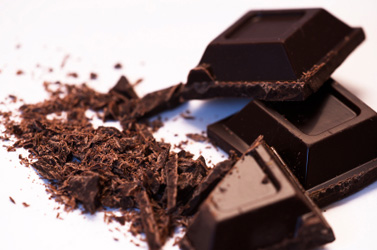 |
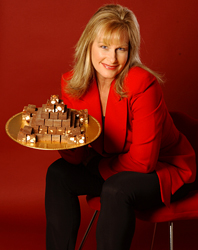 |
More About Dark Chocolate (click) |
The Chocolate Architect (click) |
Finally, don't suffer by denying yourself the occasional treat. Having a little bit of cheese (put a monthly cheese day on the calendar), if you're a cheese lover, or dark chocolate, if you enjoy that, won't kill your program, nor put tons of weight on you. Dark chocolate is a great bet. One ounce of this decadent goodie provides only 150 calories as well as heart healthy flavonols. Eat everything in reasonable and sensible proportions, and you'll be happier for it. Yes, there it is again - MODERATION!
 |
Some Cholesterol Facts Presented by Chris Kresser (click) |
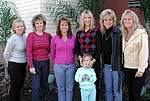 |
24
HR Fitness Friends |
One more thing, well, maybe two:
This is a great collection of widespread myths that seem to somehow keep coming around. Like some bad exercises (e.g. behind the neck pull-downs) even if publicly denounced, give them a few years, and they're back. Even the health conscious' memory is short. Oh, there's another one that is amazing to see. Remember the plastic wrap that you are supposed to wear around your mid-section to lose belly fat? Thrown off the air for being totally bogus, it has made a (brief) comeback, and many people always looking for a quick fit see this, during their late-night pizza and beer TV movie sessions and jump on it and throw their dollars willingly at those snake-oil salespeople. Hey, a quick way to make a lot of money off the gullible. And they keep growing in numbers as fast as they are growing in size.
Health Myths that need to die (but seem to refuse to do so) from 2017
The other item relates to the best way to creating a flat stomach - nope, it's not doing a thousand crunches (a lot of personal trainers are still hung up on crunches and think that's the Holy Grail). Long debunked, but seemingly impossible to erase.